WALES
Cardiff
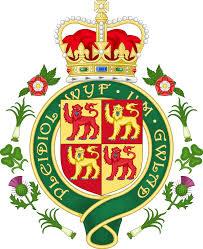
Cardiff
Cardiff
Cardiff is a young capital in Europe and an enormous amount of urban renewal and restoration is taking place. One of the most fashionable cities in the UK, Cardiff has been the capital of Wales for just over 50 years, with chic and modern shopping centers, historic Victorian shopping arcades and top restaurants.
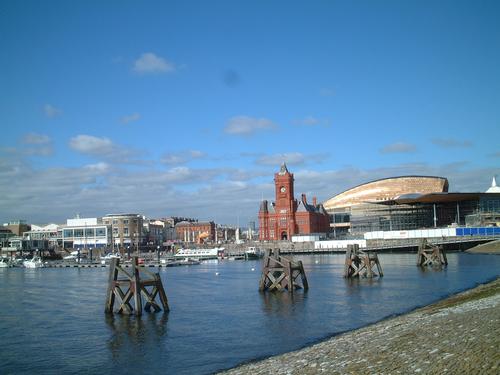 Cardiff BayPhoto: Public Domain
Cardiff BayPhoto: Public Domain
Cardiff Bay is a hot spot, where waterfront restaurants, cafes, bars and shops all benefit from the transformation of these former harbor areas. Nevertheless, the city has managed to preserve a lot of greenery.
Wood Street is the city's main tourist information center and is close to the River Taff, Central Station, Millennium Stadium and Cardiff Arms Park.
Popular tourist attractions include Cardiff Castle, one of the most visited sights in Wales with over 2000 years of history within its walls. Castell Coch, the 'Red Castle' of the city with fairytale round towers and red turrets. Llandaff Cathedral, with the beautiful modern sculpture 'Christ in Majesty'. The Mermaid Quay, with a particularly high concentration of nightlife and Caerphilly Mountain, with panoramic views of both the city and the surrounding scenic Welsh countryside.
Location
Cardiff is the largest city in Wales and is located in the far south of the country, next to the Bristol Channel. Cardiff is also the capital of South Glamorgan and currently has a population of nearly 350,000. The city center is approximately 1.5 km inland, accessible via Lloyd George Boulevard. Cardiff city center is relatively flat and bordered by hills to the east, north and west. The highest point in the town is Garth Hill, 307 meters above sea level.
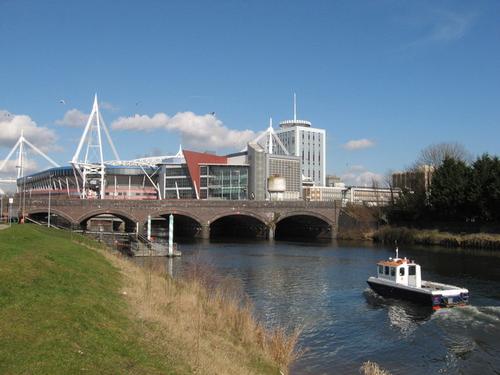 River Taff by CardiffPhoto: James Garreth CC 2.0 Generic no changes made
River Taff by CardiffPhoto: James Garreth CC 2.0 Generic no changes made
Cardiff is bordered to the west by the rural district of the Vale of Glamorgan, to the east by the city of Newport; to the north on the South Wales Valleys and to the south on the Bristol Channel. The River Taff winds through the city and flows into the freshwater lake of Cardiff Bay along with the River Ely. A third river, the Rhymney, flows through the east of the city directly into the Severn estuary.
Weather
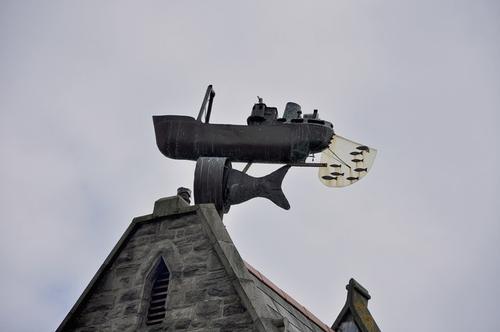 Weather vane New George Street CardiffPhoto: Mick Lobb CC 2.0 Generic no changes made
Weather vane New George Street CardiffPhoto: Mick Lobb CC 2.0 Generic no changes made
Located in the northern temperate zone, Cardiff has a maritime climate characterized by mild weather that is often cloudy, wet and windy. The weather is typical of the UK and can therefore be quite unpredictable.
The summer months of May, June, July, August and September are generally the hottest months, with beautiful sunny weather most days. The average maximum temperatures are between 19 and 22 °C. The winter months in Cardiff are the wettest and coldest months and therefore the most changeable, but even then the weather in Cardiff is sometimes good and mild, with clear days and sunny weather. The temperature generally remains above zero.
Spring is a particularly popular time to visit Cardiff and the weather is quite mild in March, April and May, although some days can be rainy and windy. Many trees begin to bloom at this time of year, and Cardiff's parks and gardens are adorned with spring colors. The temperatures remain above 14 °C, just like in autumn. Cardiff has more than 1,500 hours of sunshine in an average year and less rain than the average in Wales.
History
Cardiff has a fascinating history. The city goes all the way back to the Romans, who built a fortress here around 55 AD. They chose the place wisely because three rivers meet here, namely the Taff, Ely and Rhymney. Cardiff may also owe the naming to the Romans. It was then known as Caer Didus, possibly meaning the 'fortress of Didius', after the first Roman governor, Aulus Didius Gallus. The Romans stayed here until about 350 AD.
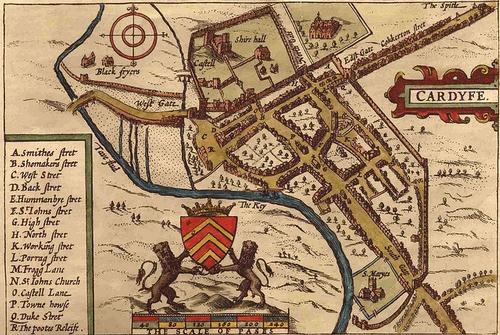 Map of Cardiff 1610Photo: Public Domain
Map of Cardiff 1610Photo: Public Domain
The Normans arrived in Wales shortly after the Battle of Hastings. They started building a castle in 1091 on the ruins of the ancient Roman fortress. Originally the castle was made of wood, but it was rebuilt with stone in the 12th century. A walled medieval city was created at the southern entrance of the castle. In 1404, the invading army of the Welsh warlord Owain Glyndwr destroyed both the castle and the surrounding city. By the 16th century, although Cardiff was not a wealthy port, it was a busy one. In 1573 it was allowed to collect customs duties. Two hundred years later, the city fell into disrepair, with less than 2,000 people living in the city.
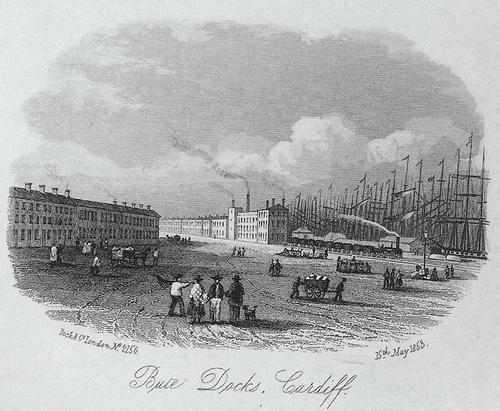 Bute docks in CardiffPhoto: Publiv domain
Bute docks in CardiffPhoto: Publiv domain
The construction of the Cardiff docks in the 1830s finally allowed the city to take advantage of the area's vast coal reserves. Coal became the main export product, triggering some kind of population explosion here. By 1881, Cardiff had finally regained its position as the largest city in Wales. Towards the end of the 19th century, the powerful Bute family built the Glamorganshire Canal. Connecting Merthyr Tydfil to Cardiff made the city one of the largest coal-exporting ports in the world. The Bute family was also responsible for the renovation and expansion of Cardiff Castle.
A Roman Catholic Archdiocese was founded in 1916 and many national institutions were built, such as the National Museum of Wales. About fifty years later, Cardiff defeated competitor Caernarvon and became the capital of Wales. Today, more than 50 different nationalities make up the city's multicultural community. Recent developments in the city include the construction of the Millennium Stadium, which hosts the annual National Eisteddfod of Wales and many major sporting events.
Sightseeing
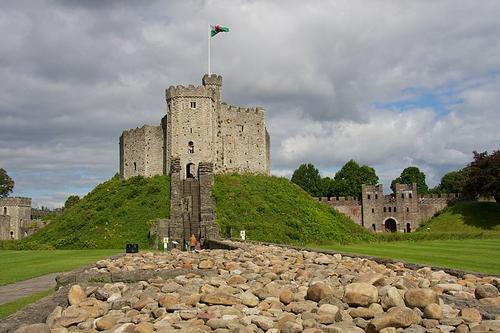 Cardiff CastlePhoto: Mario Sánchez Prada CC 2.0 Generic no changes made
Cardiff CastlePhoto: Mario Sánchez Prada CC 2.0 Generic no changes made
Cardiff Castle is the most famous building in Wales and it is located in the center of the city. This immense and impressive castle has about 2000 years of history. Its origin is Roman, and remains of the Roman wall can still be seen.
The castle took shape after the Norman conquest. The first keep, built by Robert Fitzhamon, the Norman lord of Gloucester, was probably made of wood. Over the years, more medieval fortifications followed, and everything that was made of wood was replaced with stone.
In the 18th century, the castle passed to the Bute family. Known as the richest man in the world around 1860, John Bute commissioned famous architect William Burgess to transform the castle enclosures. Within Gothic towers, he created lavish interiors, rich in murals, stained glass, marble, gilded and elaborate carvings. Each room has its own special theme. John Bute died in 1900 and his son, while in financial distress, completed restoration work, including rebuilding the Roman wall.
After the death of the 4th Marquess of Bute, the family decided to donate the castle and much of the park to the city of Cardiff. For 25 years, the castle has been home to the National College of Music and Drama, and has become one of Wales' most popular visitor attractions since 1974.
Bute Park has a popular water bus stop at Canton Bridge and is important to the local wildlife. Egrets, kingfishers and woodpeckers live here. The arboretum contains a number of beautiful and unusual solitary trees, some of which are the largest of their kind in the UK.
In addition to Cardiff Castle, there are other castles to admire in the city and immediate vicinity. After all, Wales has the highest concentration of castles in the United Kingdom.
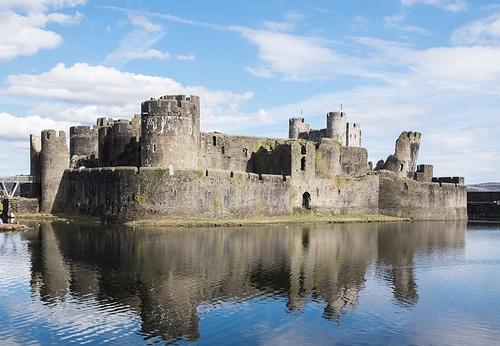 Caerphilly CastlePhoto: DeFacto CC 4.0 International no changes made
Caerphilly CastlePhoto: DeFacto CC 4.0 International no changes made
While as attractive as its Cardiff counterpart, the stunning Caerphilly Castle 15 minutes' drive north of the city is of much more recent date. It was built in 1628 and has been the largest castle in the country ever since. It served as part of the network of castles built by the English to control the coveted Welsh countryside. Given the size and scale, you can easily take a half day to see everything. Notable are the two huge drawbridges, which, with the deep moat they span, give an impressive picture of the castle's purpose, keeping the enemy out. Inside the castle, you can see a variety of old weapons and armor, much of which was actually used.
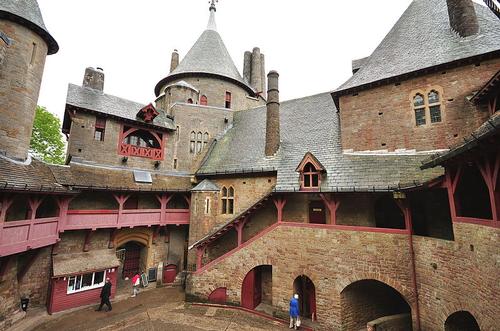 Castell Coch CardiffPhoto: Nilganion CC 4.0 no changes made
Castell Coch CardiffPhoto: Nilganion CC 4.0 no changes made
Castell Coch, also known as the red castle, is only 200 years old. But it seems that this castle, with its attractive turrets and towers, comes straight from a fairy tale book. This was indeed the intention of the maker, the third Marquis of Bute. The attention to detail, both inside and out, is remarkable and makes it well worth a visit. Attractive include the carvings of creatures and religious icons, including some (you guessed it) portraying famous fairytales. Visitors will also see multimedia explorations of the building's unique history.
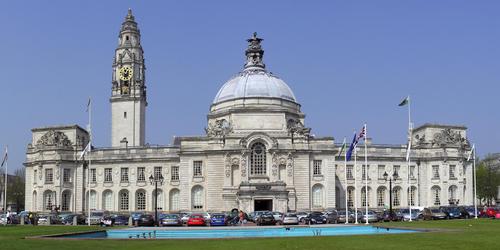
Town Hall CardiffPhoto: User:Yummifruitbat CC 2.5 Generic no changes made
Cardiff City Hall is in the heart of the city. Opened in 1906, it is primarily a venue for conferences, exhibitions and events, but is also open to visitors to the city. The impressive City Hall exterior is built in English Renaissance style and constructed from Portland stone. The interior features highly decorative Edwardian interiors, including the beautiful marble hall lined with Sienna marble columns and a beautiful council chamber. City Hall has an extensive art collection, including "Winter" by Joseph Farquharson. A booklet is available for free at the reception of the town hall, with all the details about the collection. You can visit the city hall for free.
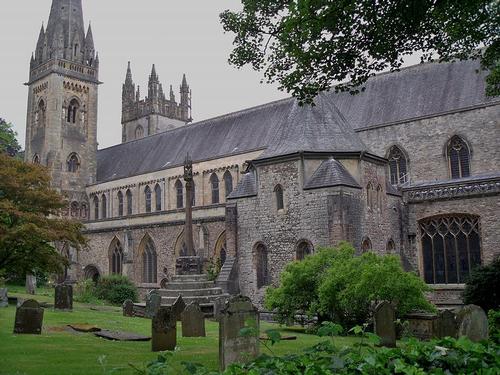 Llandaff cathedral CardiffPhoto: Peter Broster CC 2.0 Genericno changes made
Llandaff cathedral CardiffPhoto: Peter Broster CC 2.0 Genericno changes made
The spectacular and famous Llandaff Cathedral can be found in the picturesque Llandaff area and offers regular services and concerts throughout the year. Highlights include an impressive modern Christ statue, Gothic arches and spectacular interiors and many original features. St. David's Cathedral is considered the city's second cathedral and is located in the center. St. David's dates from the late 19th century. The cathedral was restored in the mid-20th century after damage during the Second World War and is famous for its high stone towers, a huge pipe organ and beautiful stained glass windows.
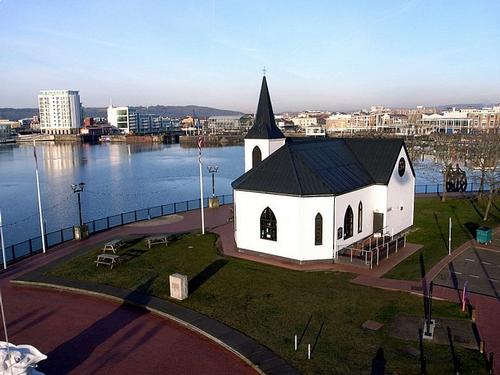 Norwegian Church CardiffPhoto: Nick Russill CC 2.0 Generic no changes made
Norwegian Church CardiffPhoto: Nick Russill CC 2.0 Generic no changes made
The redevelopment of Cardiff Bay covers almost the entire former shipyard and there are many fun things to do, especially if you are traveling with children. Techniquest is an interactive, child-friendly science center. The facility's top-notch planetarium is also well worth a visit. Parents with children who like to read books like Charlie and the chocolate factory and the big friendly giant should also take a look at the historic Norwegian church, which the author of these classic stories, Roald Dahl, often visited. Also notable is one of Cardiff Bay's newest buildings, the Senedd, which is home to the country's government offices. The old former warehouses and yards have now been upgraded to luxury residences and hotels and are home to some of the best restaurants in Cardiff.
Tips Cardiff
Cardiff's museums are well worth seeing, below are some of the city's most important ones.
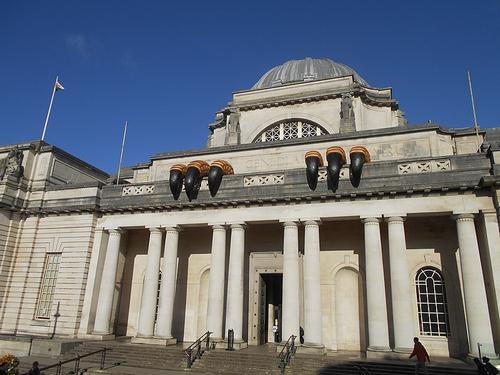 National Museum CardiffPhoto: Simon Burchell CC 4.0 International no changes made
National Museum CardiffPhoto: Simon Burchell CC 4.0 International no changes made
Located in Cardiff's Cathays district, the National Museum is a unique museum with a wide range of art and science exhibitions. In addition to elegant art galleries with spectacular works by world-renowned artists, exhibitions honoring the 'Evolution of Wales' and many significant historical artifacts, the National Museum and Gallery also features a natural history section with many interactive exhibits, which are particularly popular with children. The museum is best known for its beautiful collection of Impressionists, with work by Monet, Renoir and van Gogh.
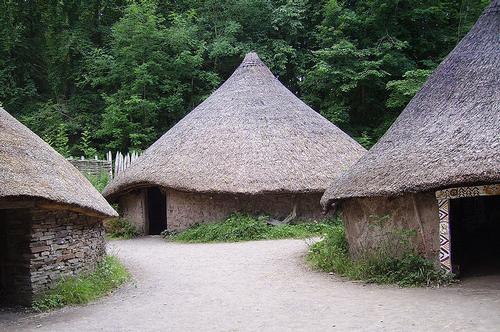 Celtic Village Museum of Welsh Life CardiffPhoto: Public Domain
Celtic Village Museum of Welsh Life CardiffPhoto: Public Domain
The famous Museum of Welsh Life is more of a small village describing the story of Wales than a real museum. Located in St. Fagans, on the outskirts of Cardiff, the Museum of Welsh Life features many historic buildings from all over Wales, which have been carefully moved brick by brick from their original location and rebuilt on this site. Highlights at the Museum of Welsh Life include a 17th-century farmhouse, a terrace with iron workers' houses, a small castle and a medieval church. Set on approximately 100 acres / 40 acres of land, the museum has become one of the most important and popular attractions of its kind in Wales.
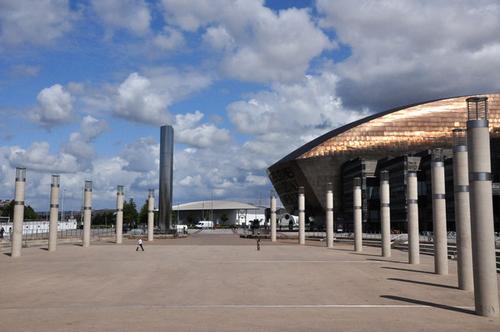 Cardiff Water TowerPhoto: Mick Lobb CC 2.0 Generic no changes made
Cardiff Water TowerPhoto: Mick Lobb CC 2.0 Generic no changes made
As Dubrovnik is linked with the Game of Thrones series, Cardiff plays an important role in the universe of the science-fiction drama series Dr. Who. You can take a two-hour walking tour with a guide and visit numerous locations where the filming took place. The guide will entertain you along the way with anecdotes and insider stories about the actors and film locations. The Watertower can be seen in the photo above and plays an important role as a filming location in the spin-off Torchwood.
Useful links Cardiff
BBC Country ProfilesWorld Fact Book Explore all Countries
How to call
Last updated November 2025
Copyright: Team - The World of Info